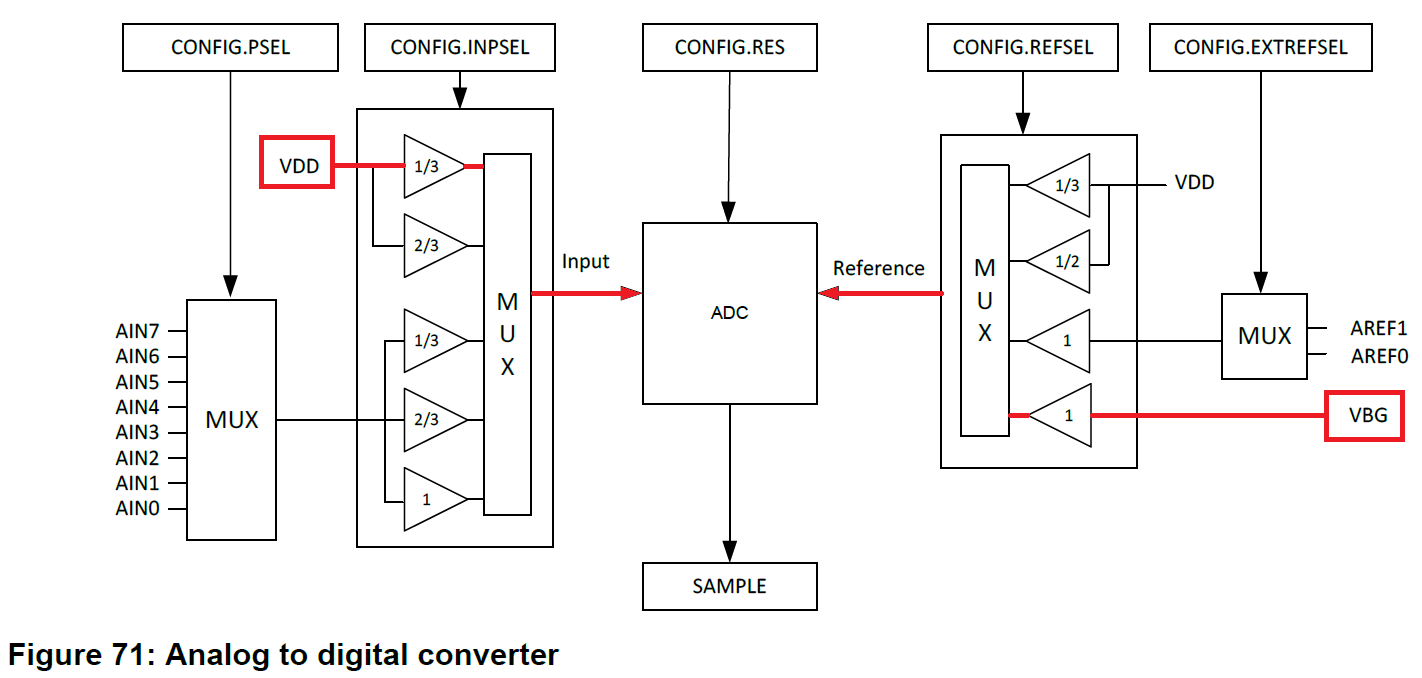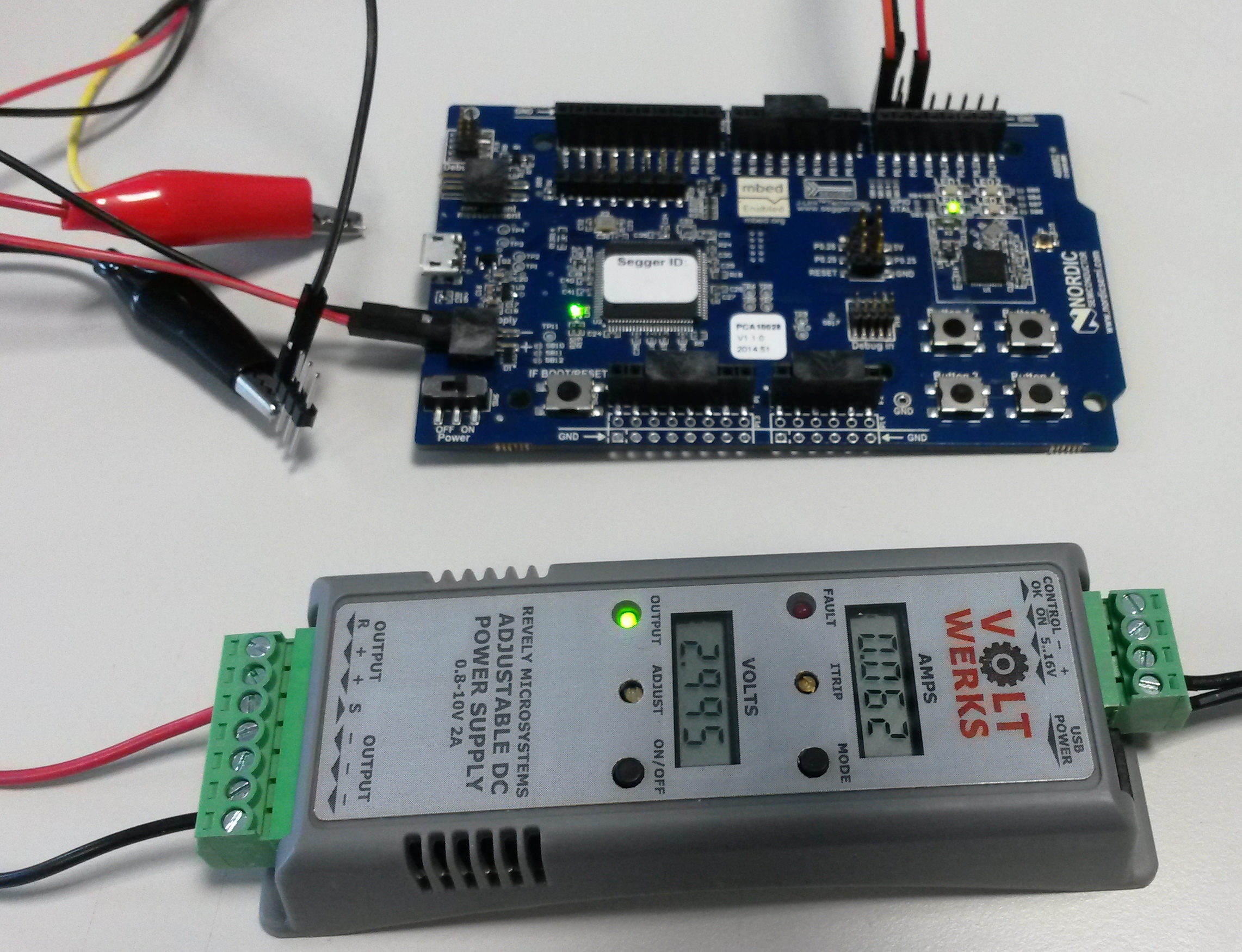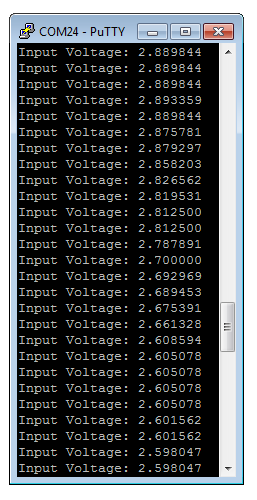Measuring battery voltage with Nordic nRF51x devices
When running embedded applications on devices powered by battery, it is very common to read the input voltage and use this information to determine which task will be executed next. In addition, low-power microcontrollers usually have a low pin count and these lines have to be used effectively. A few will be used to "talk" to peripherals to read from sensors and write to actuators, meanwhile others are simple required to get the microcontroller up and running (power supply, clk / crystal, reset-logic, etc).
From the Nordic nRF51x Reference Manual, we found out that the SoC contains a VBG (internal 1.2 V band gap reference) that can be wired to the ADC as voltage reference, in addition to the Vcc (power-supply) connected to the ADC as analog input.

This is a very interesting feature, as it let us dedicate an analog input for a different purpose or simple reduce the BoM & costs. In addition, we could potentially detect whether the device is being powered over USB or a coin-cell battery, depending on the value provided by the ADC. For example, from the nRF51-DK board schematic, we can see the power supply circuit

A simple program has been created to proof this concept and show a real example:
/*
* This is a simple program that let us use the ADC to read the input voltage.
*/
#include "mbed.h"
DigitalOut led_status(LED3);
Serial device(p9, p11); // tx, rx
void my_analogin_init(void)
{
NRF_ADC->ENABLE = ADC_ENABLE_ENABLE_Enabled;
NRF_ADC->CONFIG = (ADC_CONFIG_RES_10bit << ADC_CONFIG_RES_Pos) |
(ADC_CONFIG_INPSEL_SupplyOneThirdPrescaling << ADC_CONFIG_INPSEL_Pos) |
(ADC_CONFIG_REFSEL_VBG << ADC_CONFIG_REFSEL_Pos) |
(ADC_CONFIG_PSEL_Disabled << ADC_CONFIG_PSEL_Pos) |
(ADC_CONFIG_EXTREFSEL_None << ADC_CONFIG_EXTREFSEL_Pos);
}
uint16_t my_analogin_read_u16(void)
{
NRF_ADC->CONFIG &= ~ADC_CONFIG_PSEL_Msk;
NRF_ADC->CONFIG |= ADC_CONFIG_PSEL_Disabled << ADC_CONFIG_PSEL_Pos;
NRF_ADC->TASKS_START = 1;
while (((NRF_ADC->BUSY & ADC_BUSY_BUSY_Msk) >> ADC_BUSY_BUSY_Pos) == ADC_BUSY_BUSY_Busy) {};
return (uint16_t)NRF_ADC->RESULT; // 10 bit
}
int main()
{
float value;
device.baud(115200);
my_analogin_init();
while(1) {
led_status = 0;
wait(0.2);
led_status = 1;
wait(0.8);
value = (float)my_analogin_read_u16();
value = (value * 3.6) / 1024.0;
device.printf("Input Voltage: %f\n\r",value);
}
}
We used an adjustable power supply to perform the tests:

This is the output from the serial console:

4 comments on Measuring battery voltage with Nordic nRF51x devices:
Please log in to post comments.


Hi,
I tried your code and it looks really good. I was wondering though, when I changed the ADC resolution from 10 to 8 and 9 bits, it gave different voltage readings. For 10 bits it gave 2.6V, 8 bits gave 0.8V, and 9 bits gave 1.45V. Any reason why?